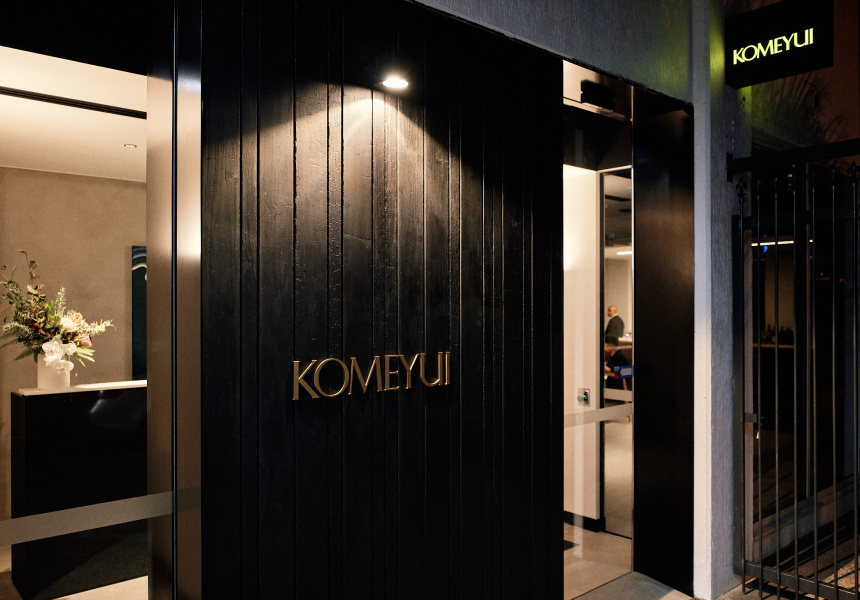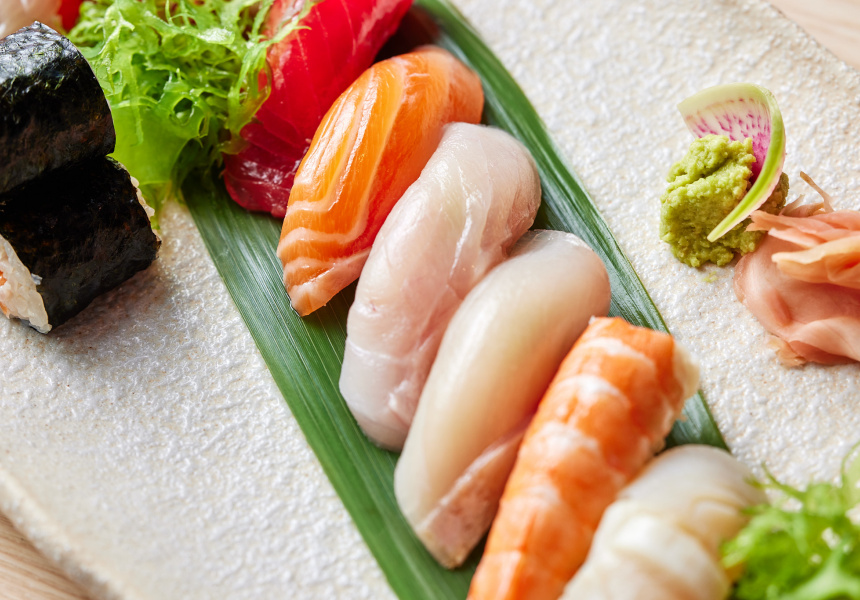At a 12-metre-long sushi bar, it’s serving seasonal sashimi and nigiri omakase menus alongside plates of coal-grilled miso-marinated black cod, braised black pork belly in a soy sauce glaze, and pork gyoza with yuzu citrus soy vinegar. “We’re not serving food, we’re serving a piece of art.”
Motomu Kumano remembers a childhood of great piles of squid, crab, salmon, ocean trout and flounder, the daily catch his father and grandfather would bring in on their fishing boat in Shiraoi, Hokkaido, in Japan’s far north.
“I would help out,” Kumano says. “Actually, I was going to be a fisherman. But my father said, ‘No, the timing is not good anymore.’”
But Kumano also grew up around cooking. His grandmother was a culinary teacher, specialising in the food of the indigenous Ainu people of Hokkaido.
“So I grew up knowing about fresh fish, but also techniques on ageing and preserving fish as well,” he says.

Kumano eventually became a chef, and the Hokkaido fishing community’s loss became Australia’s gain when he moved to Melbourne in 2005. He worked as a sushi chef at the celebrated Kenzan’s GPO offshoot for six years before leaving to open the original Komeyui in Port Melbourne in 2011. He would later move Komeyui into a larger, more refined premises in South Melbourne, owned by CR Kennedy & Company. When CR Kennedy director Clem Kennedy mentioned the company had purchased a new building on Wharf Street in Brisbane’s Spring Hill, Kumano saw an opportunity to expand interstate.
Komeyui Brisbane opened on the first Friday of the year in a long modern space tucked under the former Australian Federal Police building at 191 Wharf Street. It’s a slightly peculiar spot with a surprising amount of Brisbane dining DNA, with La Cache a Vin next door and the original Happy Boy (and, before it, Little Tokyo) a block away on the corner of Bowen and Mein Streets.
The Baenziger Coles-designed space echoes South Melbourne with its slate-tile floors, handsome furniture and striking artwork, but has been given a lighter touch with pine timber surfaces and cabinetry. Pride of place is a raised 12-metre-long counter where diners can sit and watch the chefs as they serve a multi-course sushi omakase menu or prepare dishes for à la carte diners.

The name Komeyui is a compound word invented by Kumano from two Japanese terms: kome, which means rice, and yui, which means knot or connection. Behind the sushi counter is a large traditional cast-iron rice cooker called a hagama; the cooking method dates back more than a thousand years and brings out a natural sweetness in the grain. It’s the cornerstone for a menu that ranges from seasonal sashimi and nigiri featured on the omakase selection – depending on the time of year, you might eat locally sourced kingfish, King George whiting, calamari and garfish, or scallops and chutoro (medium fatty) bluefin tuna imported from Japan – to cooked items that can be ordered à la carte. Smaller plates include Wagyu tataki with leek, potato and a soy hollandaise sauce, pork gyoza with yuzu citrus soy vinegar, and agedashi tofu served in a hot dashi broth. For something larger, you can order braised black pork belly in a soy sauce glaze, black cod marinated in miso for three days and grilled in a Josper charcoal oven, or hand-cut ox tongue with sesame spring onion sauce.
For drinks, there’s a clutch of signature cocktails, including a sake Martini; shochu, gin and whisky highballs; a tight selection of Australian, New Zealand and French wines designed to be paired with certain courses; and a healthy collection of sake.
It adds up to one of the first serious restaurant openings of 2023. Komeyui may have been operating just 10 days, but Kumano says he’s already getting return diners through the door.
“The reception has been really good. One customer has already come through three times,” Kumano says, laughing. “I said, ‘Three times, that’s too much!’
“But what we always like to say is, ‘we’re not serving food, we’re serving a piece of art.’ We have to behave like artists.”